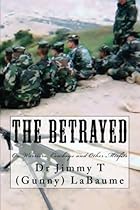By Dr. Jimmy T (Gunny) LaBaume, President & CEO, Land & Livestock International, Inc.
The difference between stocking rate and stock density is critical to understanding how and why cell grazing works.
Stocking Rate is the actual number of animals or AUs on a specific area for a specific period of time, usually for a grazing season. It is the animal to land allotment for the entire grazing season and management area (the whole ranch), for example 120 AUMs per section.
Stock Density is the animal to land relationship at an instant of time and in one particular segment of the management area (an individual pasture).
The greater the number of pastures, the better control you have over Stock Density. Stock density is the key to achieving what Alan Savory termed the “herd effect”. This is simply the simulation of the grazing, trampling, dunging, urinating, etc. activities of those massive herds of wild herbivores with which all the earth’s grasslands co-evolved.
Let’s take a look at the mathematics of stocking rate vs. stock density. Suppose you had a 30,000 acre ranch that was not cross fenced and you had one herd of 1,000 animals. Therefore, your stocking rate would be 1:30 (1 animal per 30 acres) and so would your stock density.
Now assume that you fenced the ranch into 16 pastures of 1,875 acres each and placed your 1,000 animals in one of these pastures. What would your stocking rate and stock density be?
Well, you stocking rate would not have changed–you would still have 1,000 animals on a total of 30,000 acres. However, your stock density in the one grazed pasture would have increased drastically–e.g. you would have 1,000 animals occupying 1,875 acres so stock density would be 1:1.875 (one animal for every 1.875 acres).
Now suppose that you doubled your herd to 2,000 animals. Your stocking rate would now be 1:15. (30,000 ac/2,000 animals). However, stock density in the one pasture would now be 1:0.9375.
Compare this to the original figures. Stocking rate is now double; however stock density has increased by 3,200%. Under this condition you obviously need to pay strict attention to grazing timeas it relates to plant physiology. You do not even think about running off to Las Vegas for a weekend vacation.
Source: Transcript of a Tape Recorded Session Made at Alan Savory and Stan Parson’s Rancher School. Albuquerque, NM. Spring 1982.
Dr Jimmy T (Gunny) LaBaume [send him mail] is President and CEO of Land & Livestock International, Inc.
Copyright © 2013 by Land & Livestock International, Inc. Permission to reprint in whole or in part is gladly granted, provided full credit is given.
Related articles
- Cell Grazing: Part I. Introduction (landandlivestock.wordpress.com)
- Cell Grazing: Part II. Range Rest (for those who are really into that sort of thing) (landandlivestock.wordpress.com)
- Cell Grazing: Part III. Why More Pastures? (landandlivestock.wordpress.com)


 A Handbook for Ranch Managers
A Handbook for Ranch Managers Combat Shooter's Handbook
Combat Shooter's Handbook Planned Grazing: A Study Guide and Reference Manual
Planned Grazing: A Study Guide and Reference Manual The Betrayed: On Warriors, Cowboys and Other Misfits
The Betrayed: On Warriors, Cowboys and Other Misfits
Pingback: Cell Grazing: Part V. How Many Animals? | Land & Livestock International, Inc.
Pingback: Cell Grazing: Part VI. Myths, Misconceptions, and Untruths about SGM | Land & Livestock International, Inc.
Pingback: Managing the Ranch as a Business: The One Square Yard Ranch | Land & Livestock International, Inc.
Pingback: Managed Grazing – Part 1 or 5 – Introduction to Managed Grazing. | Land & Livestock International, Inc.
Pingback: Managed Grazing – Part 2 of 5 – Animal Management | Land & Livestock International, Inc.
Pingback: Managed Grazing – Part 4 of 5 – Managing Pasture Plants | Land & Livestock International, Inc.
Pingback: Cell Grazing: Part IV. Stock Density vs. Stocking Rate. | Sprayrace's Blog
Pingback: Maximizing Spring Green Up Without Destroying Summer Pastures | Land & Livestock International, Inc.